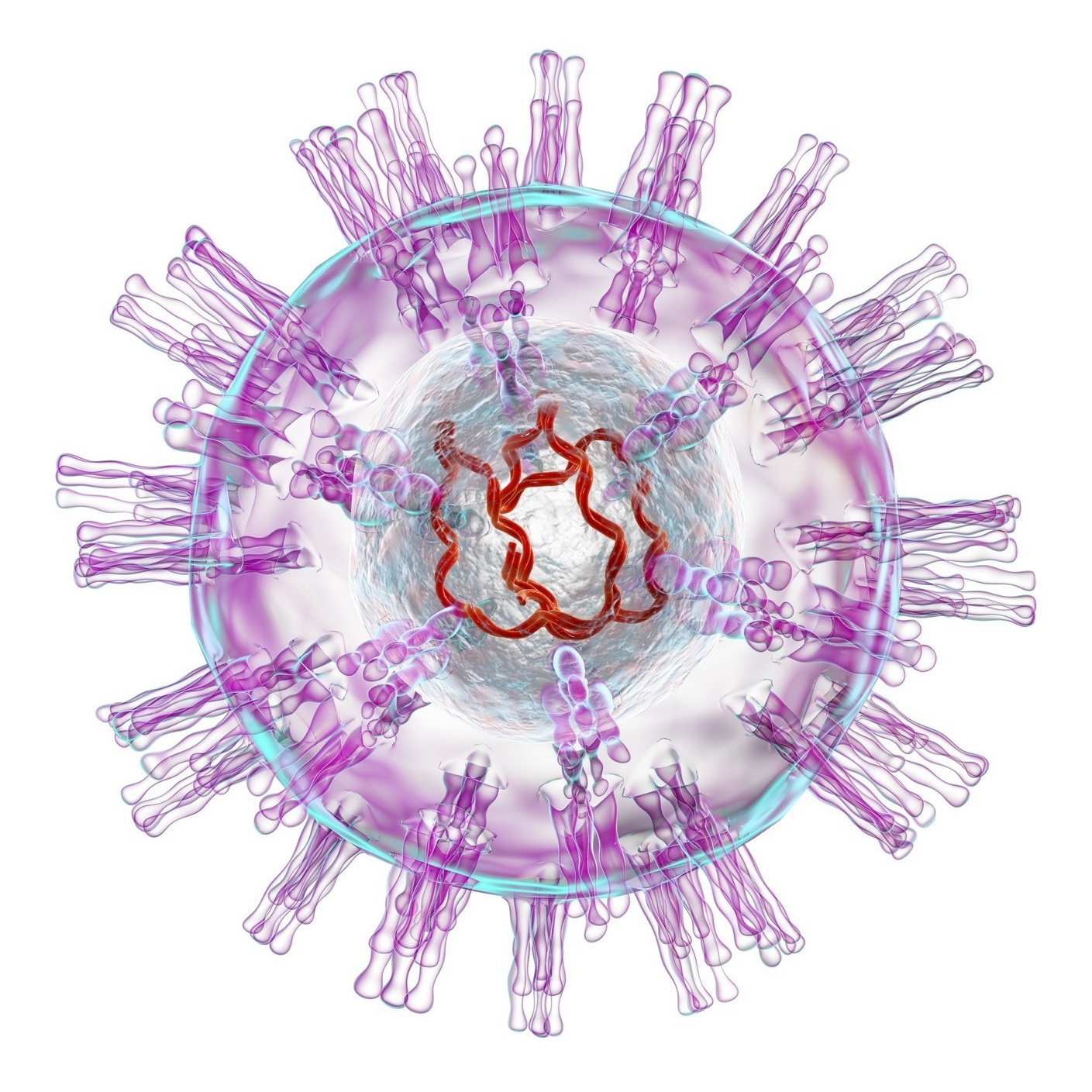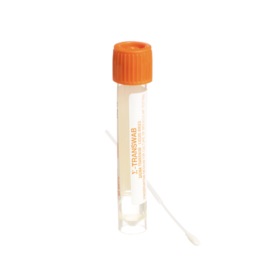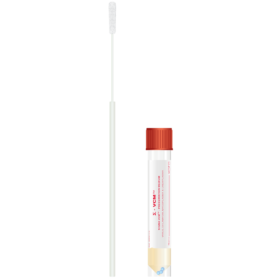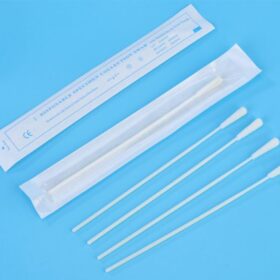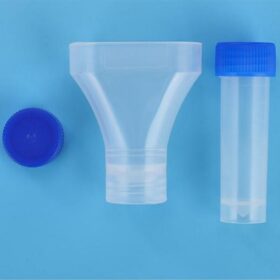Description
HSV1G.CE: HSV 1 IgG – ELISA
Enzyme ImmunoAssay (ELISA) for the quantitative/qualitative determination of IgG antibodies to Herpes Simplex Virus type 1 in human plasma and sera.
For “in vitro” diagnostic use only.
Microplates are coated with native inactivated HSV1. The solid phase is first treated with the diluted sample and IgG to HSV are captured, if present, by the antigens.
After washing out all the other components of the sample, in the 2nd incubation bound anti HSV1 IgG are detected by the addition of polyclonal specific anti hIgG antibodies, labelled with peroxidase (HRP).
The enzyme captured on the solid phase, acting on the substrate/chromogen mixture, generates an optical signal that is proportional to the amount of anti HSV1 IgG antibodies present in the sample.
A Calibration Curve, calibrated against an internal Gold Standard, makes possible a quantitative determination of the IgG antibody in the patient.
HSV1M.CE: HSV 1 IgM – ELISA
Enzyme ImmunoAssay (ELISA) for the determination of IgM antibodies to Herpes Simplex Virus types 1 in human plasma and sera with the “capture” system. The device is intended for the follow-up of HSV1 infected patients and for the monitoring of risk of neonatal defects due to HSV infection during pregnancy. For “in vitro” diagnostic use only.
The assay is based on the principle of “IgM capture” where IgM class antibodies in the sample are first captured by the solid phase coated with anti hIgM antibody.
After washing out all the other components of the sample and in particular IgG antibodies, the specific IgM captured on the solid phase are detected by the addition of a preparation of inactivated HSV1, labeled with a HSV1 specific antibody conjugated with peroxidase (HRP).
After incubation, microwells are washed to remove unbound conjugate and then the chromogen/substrate is added. In the presence of bound conjugate the colorless substrate is hydrolyzed to a colored end-product, whose optical density may be detected and is proportional to the amount of IgM antibodies to HSV1 present in the sample.
A system is described how to control whether the positivity shown by a sample is true or not (Confirmation Test), helpful for the clinician to make a correct interpretation of results.
HSV2G.CE: HSV 2 IgG – ELISA
Enzyme ImmunoAssay (ELISA) for the quantitative/qualitative determination of IgG antibodies to Herpes Simplex Virus type 2 in human plasma and sera.
For “in vitro” diagnostic use only.
Microplates are coated with synthetic HSV2 specific glycoprotein G or gG. The solid phase is first treated with the diluted sample and IgG to HSV2 are captured, if present, by the antigens.
After washing out all the other components of the sample, in the 2nd incubation bound anti HSV2 IgG are detected by the addition of polyclonal specific anti hIgG antibodies, labelled with peroxidase (HRP).
The enzyme captured on the solid phase, acting on the substrate/chromogen mixture, generates an optical signal that is proportional to the amount of anti HSV2 IgG antibodies present in the sample.
A Calibration Curve, calibrated against an internal Gold Standard, makes possible a quantitative determination of the IgG antibody in the patient.
HSV2M.CE: HSV 2 IgM – ELISA
Enzyme ImmunoAssay (ELISA) for the determination of IgM antibodies to Herpes Simplex Virus types 2 in human plasma and sera with the “capture” system. The devise is intended for the follow-up of HSV2 infected patients and for the monitoring of risk of neonatal defects due to HSV infection during pregnancy. For “in vitro” diagnostic use only.
The assay is based on the principle of “IgM capture” where IgM class antibodies in the sample are first captured by the solid phase coated with anti hIgM antibody.
After washing out all the other components of the sample and in particular IgG antibodies, the specific IgM captured on the solid phase are detected by the addition of a preparation of inactivated HSV2, labeled with a HSV2 specific antibody conjugated with peroxidase (HRP).
After incubation, microwells are washed to remove unbound conjugate and then the chromogen/substrate is added. In the presence of bound conjugate the colorless substrate is hydrolyzed to a colored end-product, whose optical density may be detected and is proportional to the amount of IgM antibodies to HSV2 present in the sample.
A system is described how to control whether the positivity shown by a sample is true or not (Confirmation Test), helpful for the clinician to make a correct interpretation of results.
HSVG.CE: HSV 1&2 IgG – ELISA
Enzyme ImmunoAssay (ELISA) for the quantitative/qualitative determination of IgG antibodies to Herpes Simplex Virus type 1 and 2 in human plasma and sera.
For “in vitro” diagnostic use only.
Microplates are coated with native inactivated HSV1 and HSV2.
The solid phase is first treated with the diluted sample and IgG to HSV are captured, if present, by the antigens.
After washing out all the other components of the sample, in the 2nd incubation bound anti HSV IgG are detected by the addition of polyclonal specific anti hIgG antibodies, labelled with peroxidase (HRP).
The enzyme captured on the solid phase, acting on the substrate/chromogen mixture, generates an optical signal that is proportional to the amount of anti HSV IgG antibodies present in the sample. A Calibration Curve, calibrated against an internal Gold Standard, makes possible a quantitative determination of the IgG antibody in the patient.
HSVM.CE: HSV 1&2 IgM – ELISA
Enzyme ImmunoAssay (ELISA) for the determination of IgM antibodies to Herpes Simplex Virus types 1&2 in human plasma and sera with the “capture” system. The devise is intended for the follow-up of HSV infected patients and for the monitoring of risk of neonatal defects due to HSV infection during pregnancy. For “in vitro” diagnostic use only.
The assay is based on the principle of “IgM capture” where IgM class antibodies in the sample are first captured by the solid phase coated with anti hIgM antibody.
After washing out all the other components of the sample and in particular IgG antibodies, the specific IgM captured on the solid phase are detected by the addition of a purified preparation of inactivated HSV1&2, labeled with a specific antibody conjugated with peroxidase (HRP).
After incubation, microwells are washed to remove unbound conjugate and then the chromogen/substrate is added. In the presence of bound conjugate the colorless substrate is hydrolyzed to a colored end-product, whose optical density may be detected and is proportional to the amount of IgM antibodies to HSV1&2present in the sample.
A system is described how to control whether the positivity shown by a sample is true or not (Confirmation Test), helpful for the clinician to make a correct interpretation of results.

